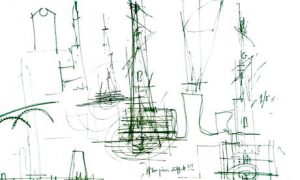MYSTORY 4
4) Anecdote Form (based on Labov)

The linguist William Labov analyzed the parts of the anecdote 1) Abstract 2) Orientation 3) Complicating Action & Resolution 4) Evaluation 5) Resolution & Coda
|
The Birthday Surprise
[Abstract] Let me tell you about the day George, the hired man at the Gravel plant, surprised Walt with a birthday present. [Orientation] There was this huge pile, a mountain, of oversize rock that came off the side of the washer. Too big for anything, unless we had a crusher, which we could not afford. They just sat there, smooth oval mottled gray stone, and piled up over the years, always with a few rock-hounds climbing over it, lookng for agates. You could get a full cubic yard, over a ton of this rock, for two dollars in those days. [Complicating Action] One day George came back from lunch with a present for Dad, a birthday present, something he found at the drugstore. Walt opened it and there was this box and inside the box was a pet rock. [Evaluation] The pet-rock fad was just starting. Now there was no difference between this pet rock and the rocks in the ovesize pile, except that the pet one had a face painted on it, a frown, with knitted eyebrows, like it was angry, and it was packaged in this box like a pet carrier. [Action continued] George says, “guess what this thing cost?” and Dad said he couldn’t guess. “Two bits?” he says. “Two dollars!” says George. [Evaluation: intensifier] Two dollars each he says. [Action…] Dad stared at that rock, hefted it in his hand, and this look came over his face. [Evaluation] I thought he was going to throw it. [Resolution] And that look was a good imitation of the frown on his new pet. [Coda] He turned to me and says, “Go put this on the oversize pile.” (275 words) |


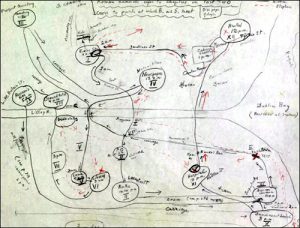 History (School, Community): Young Joyce’s imagination was captured by the cause of Irish freedom, whose most prominent spokesman at the time was Charles Stewart Parnell, a national hero who suffered a tragic fall. “He was accused of adultery in the divorce suit of Captain O’Shea. At first it appeared that Parnell might weather this scandal, but a coalition of political enemies and devout Catholics ousted him from leadership of the Irish Parliamentary Party, and the rural population of Ireland turned against their hero with savage hatred” (Litz, 1972: 20). At Parnell’s funeral crowds tore to shreds the case in which the man’s coffin had been shipped in order to have a relic. Soon he became in the Irish imagination the type of the betrayed hero (21).
History (School, Community): Young Joyce’s imagination was captured by the cause of Irish freedom, whose most prominent spokesman at the time was Charles Stewart Parnell, a national hero who suffered a tragic fall. “He was accused of adultery in the divorce suit of Captain O’Shea. At first it appeared that Parnell might weather this scandal, but a coalition of political enemies and devout Catholics ousted him from leadership of the Irish Parliamentary Party, and the rural population of Ireland turned against their hero with savage hatred” (Litz, 1972: 20). At Parnell’s funeral crowds tore to shreds the case in which the man’s coffin had been shipped in order to have a relic. Soon he became in the Irish imagination the type of the betrayed hero (21).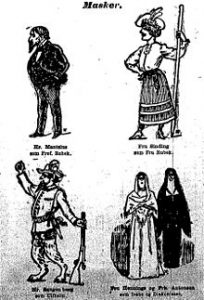 Career: At age eighteen Joyce published a refiew of Ibsen’s play, “When We Dead Awaken” in The Fortnightly Review. In a letter he sent to Ibsen, the student Joyce explained that while he promoted the dramatist’s work at every opportunity, he kept to himself the most important reasons for his admiration. “I did not say how what I could discern dimly of your life was my pride to see, how your battles inspired me–not the obvious material battle but those that were fought and won behind your forehead–how your willful resolution to wrest the secret from life gave me heart and how in your absolute indifference to public canons of art friends and shibboleths you walked in the light of your inward heroism” (Joyce, in Litz, 24).
Career: At age eighteen Joyce published a refiew of Ibsen’s play, “When We Dead Awaken” in The Fortnightly Review. In a letter he sent to Ibsen, the student Joyce explained that while he promoted the dramatist’s work at every opportunity, he kept to himself the most important reasons for his admiration. “I did not say how what I could discern dimly of your life was my pride to see, how your battles inspired me–not the obvious material battle but those that were fought and won behind your forehead–how your willful resolution to wrest the secret from life gave me heart and how in your absolute indifference to public canons of art friends and shibboleths you walked in the light of your inward heroism” (Joyce, in Litz, 24).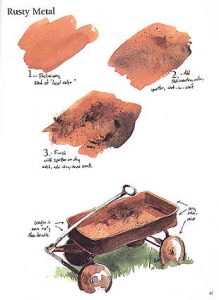 Family Discourse: Narrative
Family Discourse: Narrative One version of the assignment proposed that this documentation be entirely visual, to foreground the pictorial image in the way that the Family entry foregrounded the verbal image. However, this distinction is arbitrary since in both cases there is supposed to be a balance of words and graphics (adapting the forms to the medium of the Web).
One version of the assignment proposed that this documentation be entirely visual, to foreground the pictorial image in the way that the Family entry foregrounded the verbal image. However, this distinction is arbitrary since in both cases there is supposed to be a balance of words and graphics (adapting the forms to the medium of the Web).  Identity (Know Thyself)
Identity (Know Thyself) 2) Memory Palace. Konsult externalizes and augments mental modeling, including cognitive mapping, the capability of proprioception fundamental to orientation in space and time. A feature of apparatus shift is called innervation (facilitation)–referring to the neurological changes associated with brain/mind adaptation to new technologies. In Phaedrus (the first discourse on method of literacy), Socrates warned his pupil, Phaedrus (who came to his tutorial session with a cheat-sheet up his sleeve of the text he was supposed to memorize) that writing would destroy his memory. Pedagogy in the epoch of manuscript technology involved two interdependent practices: composition of a commonplace book (florilegia), organized by topics (topoi), consisting of methods for generating various genres along with archives of relevant information and resources;
2) Memory Palace. Konsult externalizes and augments mental modeling, including cognitive mapping, the capability of proprioception fundamental to orientation in space and time. A feature of apparatus shift is called innervation (facilitation)–referring to the neurological changes associated with brain/mind adaptation to new technologies. In Phaedrus (the first discourse on method of literacy), Socrates warned his pupil, Phaedrus (who came to his tutorial session with a cheat-sheet up his sleeve of the text he was supposed to memorize) that writing would destroy his memory. Pedagogy in the epoch of manuscript technology involved two interdependent practices: composition of a commonplace book (florilegia), organized by topics (topoi), consisting of methods for generating various genres along with archives of relevant information and resources;  –GPS/EPS. The comparable warning today is that
–GPS/EPS. The comparable warning today is that 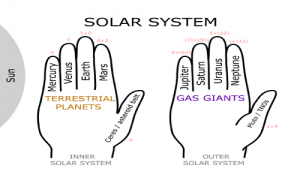
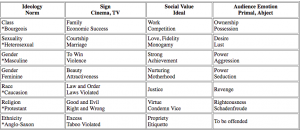
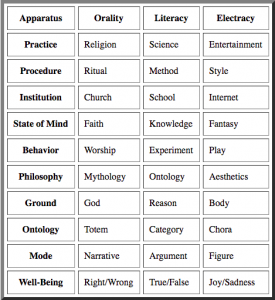 –Popcycle. The popcycle is structured as an isotopy of microcosm and macrocosm, manifesting an homology of correspondences relating individual faculties (faculty psychology remains relevant in pedagogy) with institutions and even apparati. Understanding of this civilizational recapitulation (ontogeny repeating phylogeny) is one key to egent capability put to work in konsult. By the time egents reach college they have become natives of all four apparati: born into a family and hence a native language (Paleolithic institution, the Paleo apparatus); introduced to Orality through religion, learning ethics (right and wrong behavior) whether directly in the institution of church, synagogue, mosque, or indirectly through popular culture; Literacy is acquired in school, including enculturation into the history and values of a community (a nation); simultaneously with these three interpellations, children encounter Electracy in their consumption of media. Two points must be noted: these institutions are prostheses and collective projections of the intellectual virtues or powers of individuals: Language plus Theoria (Knowing institutionalized in Literacy), Praxis (Willing institutionalized in Orality), Poiesis (Imagining institutionalized in Electracy): theopraxesis. The second point is that at the collective level these institutions are at odds, in opposition and conflict with one another. A challenge for konsult is to invent theopraxesis not only as a skill-set of individuals but also of civilizations.
–Popcycle. The popcycle is structured as an isotopy of microcosm and macrocosm, manifesting an homology of correspondences relating individual faculties (faculty psychology remains relevant in pedagogy) with institutions and even apparati. Understanding of this civilizational recapitulation (ontogeny repeating phylogeny) is one key to egent capability put to work in konsult. By the time egents reach college they have become natives of all four apparati: born into a family and hence a native language (Paleolithic institution, the Paleo apparatus); introduced to Orality through religion, learning ethics (right and wrong behavior) whether directly in the institution of church, synagogue, mosque, or indirectly through popular culture; Literacy is acquired in school, including enculturation into the history and values of a community (a nation); simultaneously with these three interpellations, children encounter Electracy in their consumption of media. Two points must be noted: these institutions are prostheses and collective projections of the intellectual virtues or powers of individuals: Language plus Theoria (Knowing institutionalized in Literacy), Praxis (Willing institutionalized in Orality), Poiesis (Imagining institutionalized in Electracy): theopraxesis. The second point is that at the collective level these institutions are at odds, in opposition and conflict with one another. A challenge for konsult is to invent theopraxesis not only as a skill-set of individuals but also of civilizations. The creative individual pursues (or is pursued by) a number of dominant metaphors. These figures are images of wide scope, rich, and susceptible to considerable exploration, exposing the investigator to aspects of phenomena that might otherwise remain invisible to him. Often the key to the individual’s most important innovations inhere in these images. In Darwin’s case, the most fecund metaphor was the branching tree of evolution, on which he could trace the rise and fate of various species. Gruber’s students have uncovered other such metaphors of wide scope. William James had a penchant for viewing mental processes as a stream or river, rather than in terms of the associationist images of a train or a chain. Any consideration of John Locke should focus on his falconer, whose release of a bird symbolized the quest for human knowledge. Finally, in conveying his own emerging view of the creative process, Gruber finds himiself attracted to the Mosaic image of the bush that is always burning but never consumed. (Howard Gardner, Art, Mind, and Brain: A Cognitive Approach to Creativity).
The creative individual pursues (or is pursued by) a number of dominant metaphors. These figures are images of wide scope, rich, and susceptible to considerable exploration, exposing the investigator to aspects of phenomena that might otherwise remain invisible to him. Often the key to the individual’s most important innovations inhere in these images. In Darwin’s case, the most fecund metaphor was the branching tree of evolution, on which he could trace the rise and fate of various species. Gruber’s students have uncovered other such metaphors of wide scope. William James had a penchant for viewing mental processes as a stream or river, rather than in terms of the associationist images of a train or a chain. Any consideration of John Locke should focus on his falconer, whose release of a bird symbolized the quest for human knowledge. Finally, in conveying his own emerging view of the creative process, Gruber finds himiself attracted to the Mosaic image of the bush that is always burning but never consumed. (Howard Gardner, Art, Mind, and Brain: A Cognitive Approach to Creativity).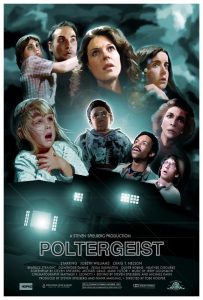 –Steven Spielberg. Sarah Boxer asked Steven Spielberg to recall his earliest visual experience. He found one from the age of 3.
–Steven Spielberg. Sarah Boxer asked Steven Spielberg to recall his earliest visual experience. He found one from the age of 3. 6) Memory Exercise: Kandinsky. As illustrated by the careers of productive people, at some point an interviewer will ask about an early memory from childhood. Mystory may adopt such interviews–the kind of things people want to know about the sources and motivations of creativity–as a guide to identify similar resources in one’s own biography to bring into the wide image matrix. Exercise: read an interview with a creative person of interest, inventory the questions asked, and answer them in your own case.
6) Memory Exercise: Kandinsky. As illustrated by the careers of productive people, at some point an interviewer will ask about an early memory from childhood. Mystory may adopt such interviews–the kind of things people want to know about the sources and motivations of creativity–as a guide to identify similar resources in one’s own biography to bring into the wide image matrix. Exercise: read an interview with a creative person of interest, inventory the questions asked, and answer them in your own case.
 5) Design Relay: Coco Chanel. Design is electrate écriture (konsult is designed). Design in general and in its various specialized applications is a resource for composing wide image since there is a legible continuity relating the memory event with the gesture defining the designer’s style. Coco Chanel is a case in point. In her account of the life and career of the designer Coco Chanel, (Coco Chanel: The Legend and the Life), Justine Picardie explains the origins of Chanel’s Logo as alluding to the arabesque patterns of the stained glass windows in the convent that took care of destitute children, the Cistercian abbey at Aubazine, where Chanel lived from the time she was 12 years old, until age 18. This match between a detail from a childhood memory and the adult career is a signal that an image of wide scope is at work. It is worth noting in this context the archetype that is latent within and no doubt deliberately invoked by Chanel’s design: the sacred geometric figure known as
5) Design Relay: Coco Chanel. Design is electrate écriture (konsult is designed). Design in general and in its various specialized applications is a resource for composing wide image since there is a legible continuity relating the memory event with the gesture defining the designer’s style. Coco Chanel is a case in point. In her account of the life and career of the designer Coco Chanel, (Coco Chanel: The Legend and the Life), Justine Picardie explains the origins of Chanel’s Logo as alluding to the arabesque patterns of the stained glass windows in the convent that took care of destitute children, the Cistercian abbey at Aubazine, where Chanel lived from the time she was 12 years old, until age 18. This match between a detail from a childhood memory and the adult career is a signal that an image of wide scope is at work. It is worth noting in this context the archetype that is latent within and no doubt deliberately invoked by Chanel’s design: the sacred geometric figure known as 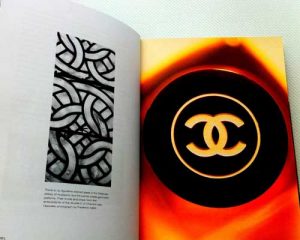 the
the 
 4) Childhood Memory: Renzo Piano.Hal Foster was in Gainesville to give a lecture for the Architecture School. The theme was Neomodernism, focusing on Norman Foster and Renzo Piano. I had not heard the story before about the role that childhood memories played in Piano’s aesthetic. It is another example of an image of wide scope, the formatting of an imagination in specific childhood experiences. There are two memories that reinforce one another in Piano’s case: one of watching sailing ships in the port city of Genoa, his hometown; the other of laundry blowing in the wind on the roofs of the city.
4) Childhood Memory: Renzo Piano.Hal Foster was in Gainesville to give a lecture for the Architecture School. The theme was Neomodernism, focusing on Norman Foster and Renzo Piano. I had not heard the story before about the role that childhood memories played in Piano’s aesthetic. It is another example of an image of wide scope, the formatting of an imagination in specific childhood experiences. There are two memories that reinforce one another in Piano’s case: one of watching sailing ships in the port city of Genoa, his hometown; the other of laundry blowing in the wind on the roofs of the city. The 95-story skyscraper Piano designed for the Shard Quarter in London expresses the sail as its Idea or parti. Architects are good relays for this translation of wide image into hypothesis since their
The 95-story skyscraper Piano designed for the Shard Quarter in London expresses the sail as its Idea or parti. Architects are good relays for this translation of wide image into hypothesis since their 